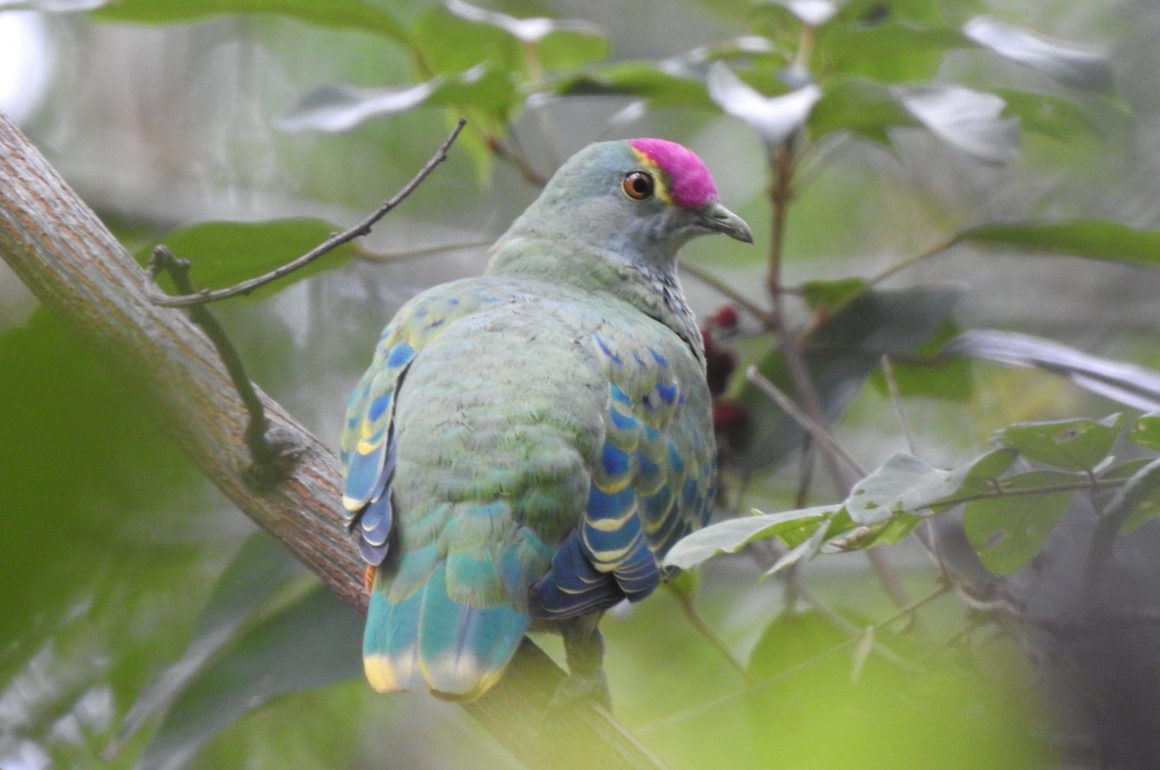
Rose-crowned Fruit-dove
I am a fan of all birding but I particularly like urban birding.
Urban areas offer the bird watcher those species that have survived and thrived in artificial environments; often when they had no real right to.
Urban birds are therefore bold, adaptable generalists.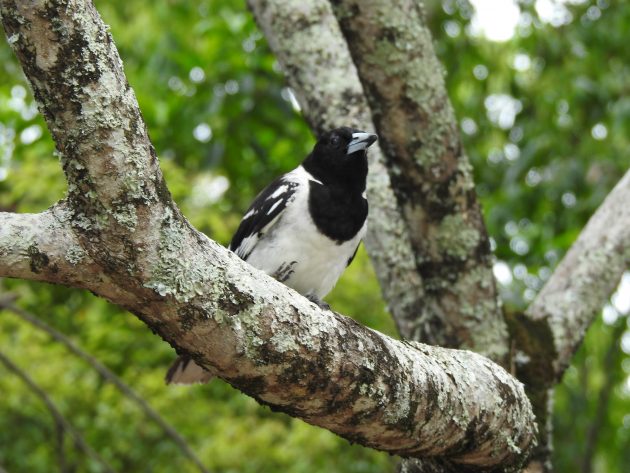 Pied Butcherbird – a common urban species
Pied Butcherbird – a common urban species
Urban birds are educators, providing for all that encounter them, symbols of the greater wild ‘out there’. For me they are nostalgic, as they are the main species remembered from childhood, the ones that got me watching…
Most birder naturalists do not just want to visit nature. They want to live with nature. They want nature to invade their yards and suburbs. Urban birds are the ones that answer this call – they, as strange as it seems, want to live with us.
As such urban birds are the adventurers, the pioneers, and they should get credit for that.
Additionally urban birding offers me the [sometimes depressing] opportunity to spend some time imagining how our local suburbs could be improved for nature. But that is a topic for another day.
This is a long introduction to a walk around my urban area; the village of Mapleton where I often take an afternoon stroll. I may be criticised for describing Mapleton as urban as it is not as urban as some places; it is a small village with a population of maybe 1000 people.
I sometimes imagine as I am walking, how overseas birders would enjoy this simple walk and the birds on it. How exotic would my everyday birds appear to new eyes in Australia?
Australia has been described as the Land of the Parrots and on any walk in any suburb, chances are you will see parrots.
In my village we would encounter Cockatoos, parrots and lorikeets.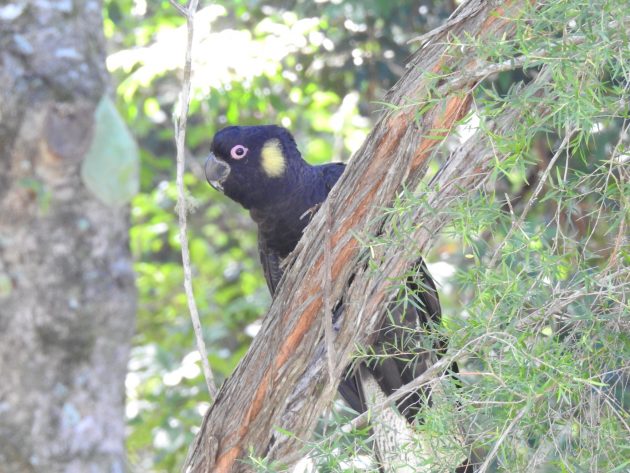
Sulphur crested Cockatoos and Yellow tailed Black Cockatoos [above] are large charismatic species that announce their presence loudly; they are genuinely heard before being seen! Both are common however the latter is usually seen daily in small to medium flocks lazily flapping over the town to the nearby forests.
King Parrots, or more correctly Australian King Parrots [below], are also agreeably common and, for me, a conspicuous backyard bird that readily comes for seed. Pale headed and Crimson Rosellas are also regular seen parrots of my town.
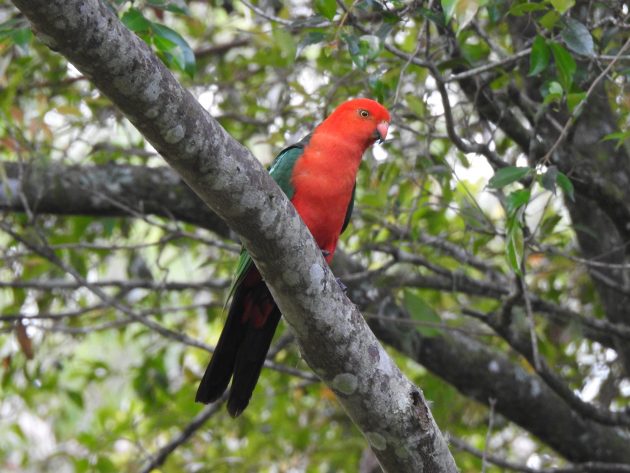
Lorikeets? We have three species with the gaudy Rainbow Lorikeet being the most conspicuous and common. Scaly breasted and Little Lorikeets are also around but are more often heard rather than seen clearly. The Littles, as their name suggests, are small and they feed high in the tops of Eucalypts.
My area is blessed with a wide variety of Pigeon species. On a walk through town you would see Crested Pigeon, Bar shouldered Dove, Wonga Pigeon and probably a flock of Top-knot Pigeons flying over. White headed Pigeon plus Wompoo Fruit Dove, Brown Cuckoo Dove, Rose-crowned Fruit dove, Peaceful Dove and Emerald Doves are also quite possible.
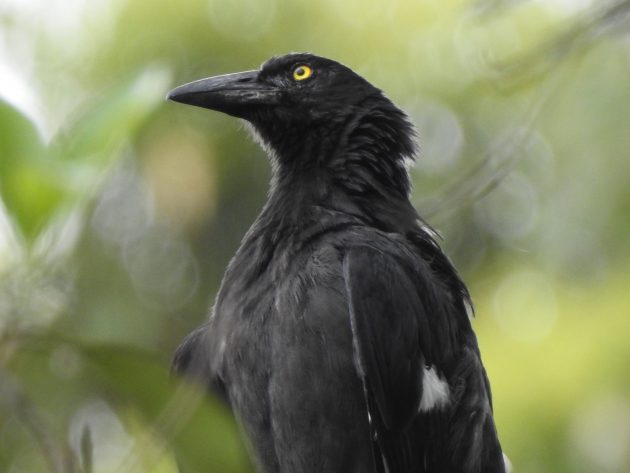
Large birds are seen throughout the streets. Laughing Kookaburras [below] compete with other large species such as Australian Magpie, Pied and Grey Butcherbirds, Pied Currawong [above] and Torresian Crow, for insect prey or the nestlings of smaller species.
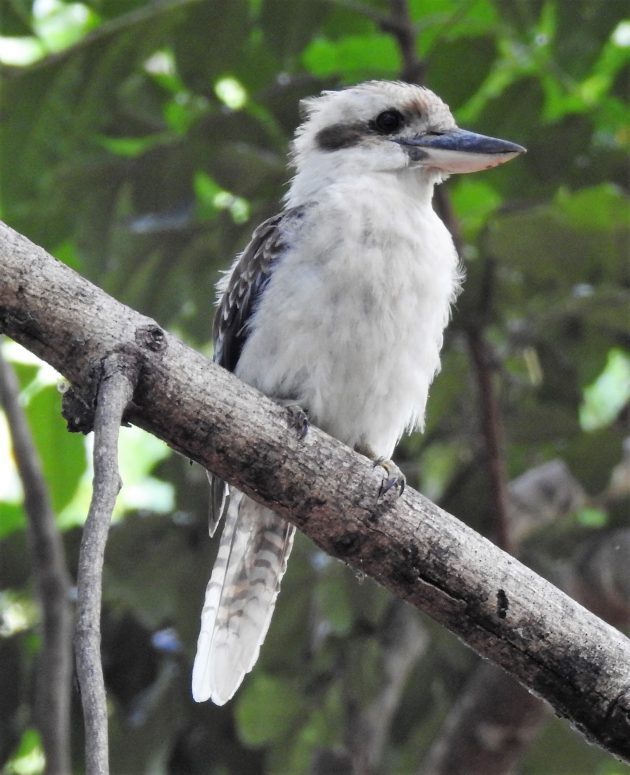
Roaming, or rather grazing the streets you will find Australian Wood Ducks. While no where near as pretty as Wood Ducks from North America, they share their habit of nesting in tree hollows.
Common honeyeater species around the town include Noisy Miner, Little Wattlebird, Blue faced Honeyeater and Lewin’s Honeyeater.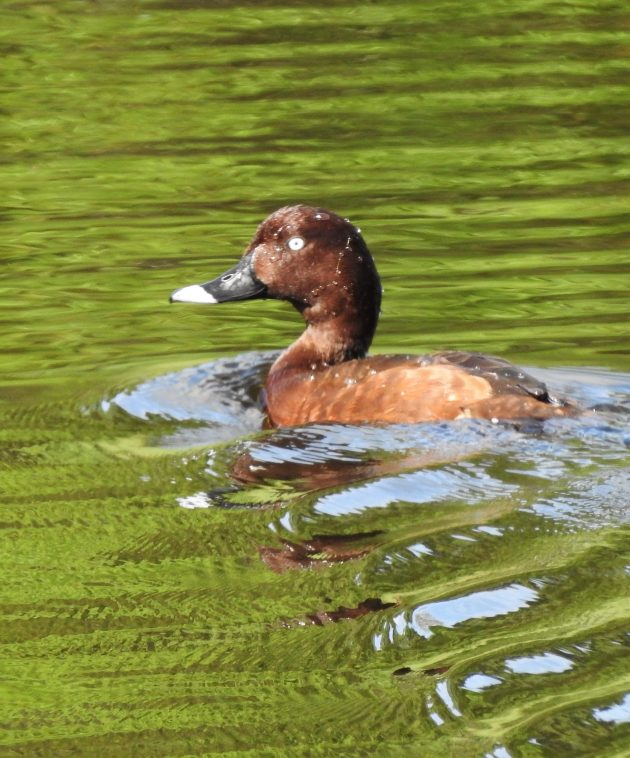
A walk around my village would usually yield a list of about 30 or so species with a dozen or so coming from a small series of ponds in the village’s centre. Here are common birds such as Australasian Grebe [pictured below], Pacific Black Duck, Hardhead [a horribly named diving duck of the genus Aythya pictured above], Little Pied and Little Black Cormorants, Eurasian Coot, Dusky Moorhen and Purple Swamphen – to name a few.
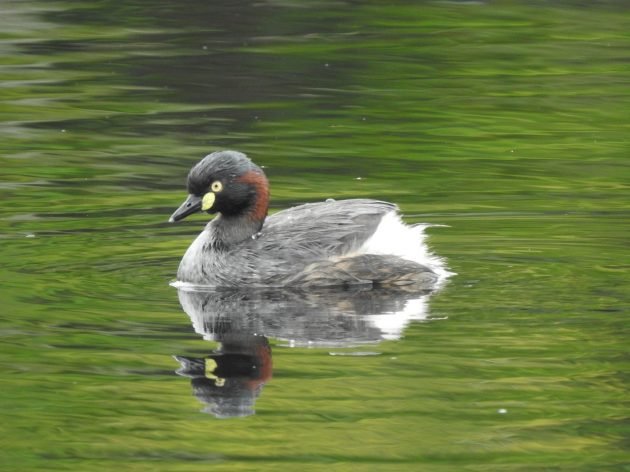
Finally, and I appreciate that this is not Facebook, however, please take the time to list half a dozen of your most common urban birds from wherever you are in the comments below. These species deserve a little time in the spotlight!













On Cape Cod, Massachusetts, USA, among my most common summer birds are Gray Catbird, Northern Cardinal, Downy Woodpecker, Ruby-throated Hummingbird, Black-capped Chickadee, American Robin, Baltimore Oriole, Common Grackle, House Finch, American Goldfinch, Song Sparrow, and House Sparrow. I see all of these species almost every day.
Man, that sounds amazing!
Let’s see, where I’m at now, some of the most common urban birds include:
Rock pigeon
Common wood-pigeon
Black-headed gull
Lesser black-backed gull
Eurasian magpie
Carrion crow
Eurasian blackbird
European robin
Well I’m at Maroochydore so my list would be:
Brush Turkey
Crested Pigeon
Pale -headed Rosella
Rainbow Lorikeet
Scaly Breasted Lorikeet
Grey Butcherbird
Pied Butcherbird
Australian Magpie
Little Corella
Thanks Ken. Living nearby in Maleny (a bit bigger than Mapleton), my friends often ask if I’m living in a wildlife park after I post photos of the birds I see around my home and on walks. It’s hard to pick favourites but I always get a thrill when I see azure kingfishers, golden whistlers, eastern yellow robins, red-backed fairywrens, brown cuckoo doves, black-shouldered kites, satin bowerbirds, willie wagtails, brown thornbills and black-faced monarchs.
I have been ‘re-wilding’ part of our yard in Arana Hills, and now have recorded 63 urban birds. What is missing is ‘small birds’ such as the smaller species of honeyeater and insectivores. Occasional visits only by Scarlet Honeyeater, Striated Pardalote, and Brown Honeyeater. The Noisy Miners chase off most of those. But I do get the four species of lorikeet, Pale-headed Rosella, King Parrots, as well as Galah, Sulphur-crested Cockatoo and Little Corella (the latter three species mainly due to feeding by a neighbour).
Inspiring article. Thank you Ken. A couple of hours from Mapleton is the small town of Esk. A wander through our streets and greener areas will reveal Galahs, Sulphur-crested Cockatoos, maybe a flyover of Yellow-tailed Black Cockatoos or Little Lorikeets, Rainbow Lorikeets, Little Corellas, King Parrots, House Sparrows, Yellow-rumped Thornbills, Red-backed Fairywrens, Grey-crowned Babblers, Spangled Drongos, Apostlebirds, Plumed Whistling Ducks, Maned Ducks, Brush Turkeys, Torresian Crows, Pied Currawongs, Pied Butcherbirds, Sacred Kingfisher, Black-faced Cuckoo-shrike, Noisy Miners, Blue-faced Honeyeaters, Brown Honeyeaters, Scarlet Honeyeaters, Striated Pardalotes, Figbirds……….
Are you still there?! I haven’t even left town!! I didn’t realise my ‘at-home’ list could go on for so long and still be incomplete! But you get the picture! So thanks again for reinforcing our good fortune at living where we live.
That fruit-dove is gorgeous! Is it even possible to get tired of seeing one?
Gidday Mike, the answer to your question is, no. They are always a pleasure to see. They are a much easier bird to hear so when you do find one in the canopy it is worth a stare!